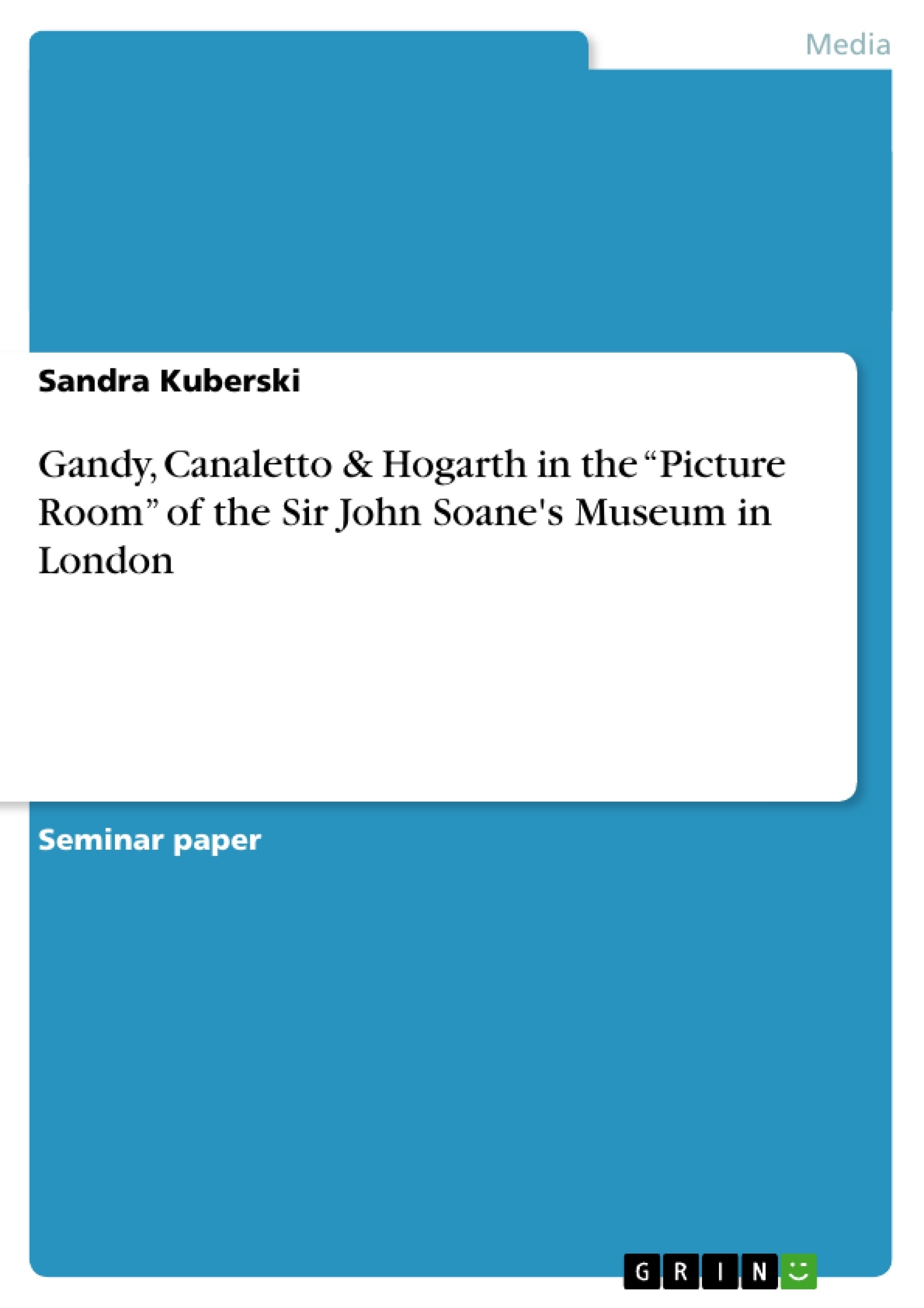This presentation introduces a selection of paintings in the picture room of Sir John Soane's Museum in London. A specialty of the picture room is its exceptional hanging with the openable panels. In this way the room that actually measures about 13 to 12 feet can grasp over a hundred paintings. Another advantage of the panels is that like this it is possible to see the paintings in different angles. Most of the paintings were bought by Soane on auctions, some are also commissions by himself.
INTRODUCTION
Today I’m talking about a selection of paintings in the picture room of Sir John Soane's Museum in London. In the previous presentation we have already heard that the specialty of the picture room is its exceptional hanging with the openable panels.
In this way the room that actually measures about 13 to 12 feet can grasp over a hundred paintings. Another advantage of the panels is that like this it is possible to see the paintings in different angles.
Most of the paintings were bought by Soane on auctions, some are also commissions by himself.
GANDY
In fact, the first paintings that entered the collection of Soane were collected and commissioned as adjuncts to his collection of architectural pieces.
From 1798, Joseph Michael Gandy worked nearly 30 years as draughtsman for Soane. Like Soane, he had been to Rome and as Gandys own career as architect was rather unsuccessful, he merged his talents with those of Soane. To present his ideas and drafts to those people responsible for the construction of a building, Soane commissioned exceptional paintings in settings like a jungle or other fantasy landscapes which of course was a clever way to advertise his work. The drawings combine correctness of detail with lots of theatrical effect.
An example is the painting which shows a “Selection of public and private buildings” and is located on the south side of the picture room. The painting was exhibited at the Royal Academy in 1818 and shows over 100 of Soane’s buildings, either as models or paintings. In the center we see a model of the Bank of England, which is illuminated by a lamp.
On the left side in the shadow we see the façade of the Soane museum. Next to it is the tomb that Soane designed for his wife who died in 1815, it’s veiled by a black blanket.
In the right foreground, Soane is sitting at a desk, depicted in his role as architect, nearly buried by his work, but as he is surrounded by piles of items and objects, also in his role as collector. The room symbolizes the home of Soane which was turned into a museum, where hardly any space was left without a collected piece.
The passion of collecting paintings increased over the years, especially around the turn of the century, when he bought his house Pitzhanger Manor in Ealing. This gave him more space for his collection, and from now on (as we have already heard) he was a keen visitor of auctions.
CANALETTO
In 1796 Soane made his first important purchases, two Canaletto paintings, in 1807 he bought a third Canaletto.
The paintings show different perspectives of Venice, like the canal or the famous bridge. But the paintings are not mere landscape paintings, they also show the hustle and bustle of everyday life.
The most striking thing about those paintings is their clarity, the bright blue sky that is very dominant. The public buildings that are shown, are depicted in a very detailed and accurate way. As viewer one is really drawn into the scene and can imagine how it is to be there.
HOGARTH
The last decade of his life, Soane’s collecting interest focused on works by his contemporaries at the Royal Academy. Many paintings in his collection where commissioned by himself.
It was his aim to encourage an independent British School of painting, which could free itself from outside influences, for example French and Italian history painting.
The most known components of Soane’s collection are the two series by William Hogarth, “A Rake’s Progress” and “An Election”, which he did not commission but bought them on auctions.
William Hogarth was a one of Britain’s most prominent artists in the 18th century. His works are satires of contemporary England, always a harsh criticism of society. Hogarth was a keen observer of his cultural, political, and social surrounding and translated those observations into caricature-like artworks.
In Soane’s days the paintings were still considered to be very racy. After a sensitive lady visitor complained about scenes with drunken men and revealing prostitutes, which apparently made her feel faint, Soane came up with the idea of the panels and in future the works were only shown to male visitors on demand.[1]
[...]
[1] http://www.timetravel-britain.com/articles/london/soane.shtml
- Quote paper
- Sandra Kuberski (Author), 2012, Gandy, Canaletto & Hogarth in the “Picture Room” of the Sir John Soane's Museum in London, Munich, GRIN Verlag, https://www.grin.com/document/286020




